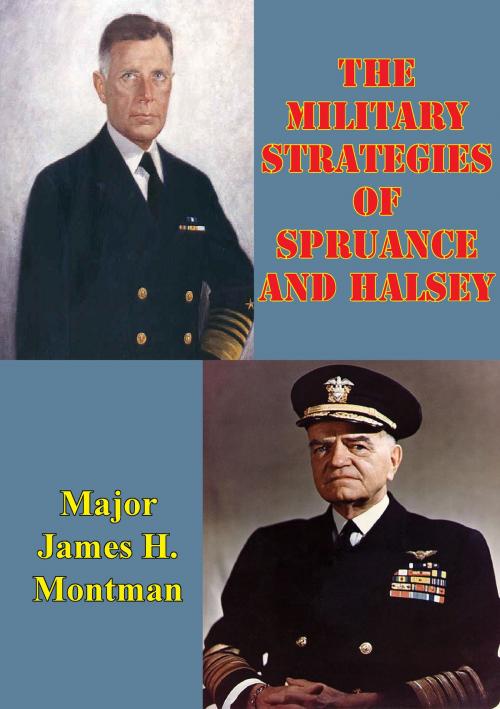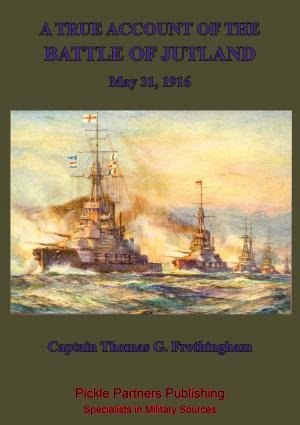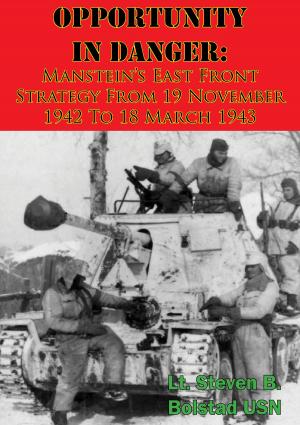The Military Strategies Of Spruance And Halsey
Nonfiction, History, Germany, European General, Military, United States| Author: | Major James H. Montman | ISBN: | 9781782898092 |
| Publisher: | Verdun Press | Publication: | August 15, 2014 |
| Imprint: | Verdun Press | Language: | English |
| Author: | Major James H. Montman |
| ISBN: | 9781782898092 |
| Publisher: | Verdun Press |
| Publication: | August 15, 2014 |
| Imprint: | Verdun Press |
| Language: | English |
The military strategy utilized by two great World War Two U.S. Navy leaders will provide an insight into the evolution of the strategy process. This paper will examine two Pacific Theater leaders involved in the early employment of a relatively new naval weapon system, the aircraft carrier. Carrier air power was virtually untested at the beginning of the second world war and eventually developed into a most formidable battle tool. The Battle of Coral Sea provided a basis for carrier tactics employed in later engagements such as the Battle of Midway. The military strategy of Admiral Raymond A. Spruance will be examined with respect to the Battle of Midway. Midway was the first major decisive naval battle where the outcome was decided on the basis of aircraft carrier operations alone. The battle was fought against a numerically superior force during the period that the Japanese Navy was strongly on the offensive.
Next, the military strategy of Admiral William F. Halsey as utilized during the Battle for Leyte Gulf will be reviewed with a continuing focus on carrier air power. Leyte Gulf was a complex group of four battles involving carrier air as well as land based air power, surface engagements and invasion forces. The battle was fought against a Japanese on force with relatively few remaining carrier air resources. Also, it was fought from an American offensive position, as U.S. forces pressed toward Japan through the Philippines.
Finally, an analysis of the strategy used by these two great warriors will be made within the context of the ACSC strategy process model in an effort to increase the understanding of the process of strategy and its derivation. A brief look at selected principles of war is also included in an effort to correlate abstract thought strategy and the conduct of war with actual warfighting experiences.
The military strategy utilized by two great World War Two U.S. Navy leaders will provide an insight into the evolution of the strategy process. This paper will examine two Pacific Theater leaders involved in the early employment of a relatively new naval weapon system, the aircraft carrier. Carrier air power was virtually untested at the beginning of the second world war and eventually developed into a most formidable battle tool. The Battle of Coral Sea provided a basis for carrier tactics employed in later engagements such as the Battle of Midway. The military strategy of Admiral Raymond A. Spruance will be examined with respect to the Battle of Midway. Midway was the first major decisive naval battle where the outcome was decided on the basis of aircraft carrier operations alone. The battle was fought against a numerically superior force during the period that the Japanese Navy was strongly on the offensive.
Next, the military strategy of Admiral William F. Halsey as utilized during the Battle for Leyte Gulf will be reviewed with a continuing focus on carrier air power. Leyte Gulf was a complex group of four battles involving carrier air as well as land based air power, surface engagements and invasion forces. The battle was fought against a Japanese on force with relatively few remaining carrier air resources. Also, it was fought from an American offensive position, as U.S. forces pressed toward Japan through the Philippines.
Finally, an analysis of the strategy used by these two great warriors will be made within the context of the ACSC strategy process model in an effort to increase the understanding of the process of strategy and its derivation. A brief look at selected principles of war is also included in an effort to correlate abstract thought strategy and the conduct of war with actual warfighting experiences.

![Cover of the book Marines In World War II - The Battle For Tarawa [Illustrated Edition] by Major James H. Montman](https://www.kuoky.com/images/2014/august/300x300/9781782892779-O9WM_300x.jpg)








![Cover of the book Helmet For My Pillow [Illustrated Edition] by Major James H. Montman](https://www.kuoky.com/images/2015/november/300x300/9781786252036-cMF2_300x.jpg)
![Cover of the book Moscow To Stalingrad - Decision In The East [Illustrated Edition] by Major James H. Montman](https://www.kuoky.com/images/2014/august/300x300/9781782893196-Qth3_300x.jpg)


![Cover of the book The Uncensored Dardanelles [Illustrated Edition] by Major James H. Montman](https://www.kuoky.com/images/2013/march/300x300/9781782890577-oVu2_300x.jpg)
